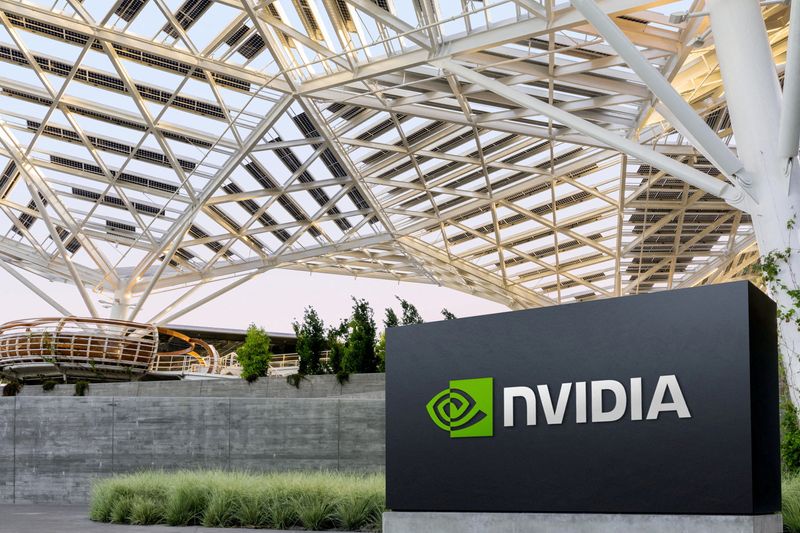Trump/Putin summit, UnitedHealth and Japan’s GDP - what’s moving markets
SAN JOSE, Calif. - NVIDIA (NASDAQ: NVDA), a prominent player in the Semiconductors industry with impressive revenue growth of 114% year-over-year to $130.5 billion, announced the integration of their Omniverse platform with top industrial software and services to boost digitalization and physical AI in industries. According to InvestingPro data, the company maintains a perfect Piotroski Score of 9, indicating exceptional financial strength and operational efficiency. The Omniverse platform connects physical data to the realm of AI, aiming to unite industrial ecosystems and foster the creation of new applications that will speed up AI’s evolution across industries.
The newly introduced NVIDIA Omniverse Blueprints are designed to enable robot-ready facilities and large-scale synthetic data generation, essential for developing physical AI. Among these blueprints is Mega, a tool for testing multi-robot systems within digital twins, and the NVIDIA AI Blueprint for video search and summarization. These tools are being adopted by leading manufacturers like Schaeffler, Hyundai Motor Group, and Mercedes-Benz to optimize their operations.
Foxconn is leveraging the Mega blueprint to train humanoids for factory operations, while KION Group and Dematic are integrating it into AI-powered automation for warehouses and supply chains. SAP’s customers and partners can also utilize Omniverse for virtual warehouse management scenarios.
In addition, Omniverse Blueprints are enabling the creation of AI factory digital twins, with Cadence and Schneider Electric with ETAP being the first to integrate their simulation software. This helps data center engineers design and simulate AI factory layouts to improve efficiency.
The Omniverse platform is expanding across various industries, with companies like Ansys, Cadence, Hexagon, and Siemens incorporating its data interoperability and visualization technologies into their solutions. General Motors has adopted Omniverse to enhance factory operations, while Unilever is using it for marketing content creation. This expansion reflects NVIDIA’s market dominance, supported by robust financials including a 75% gross profit margin and strong cash flows that easily cover its moderate debt levels.
To facilitate the development and deployment of OpenUSD-based applications, NVIDIA Omniverse is now available on AWS Marketplace and will be coming to Oracle Cloud Infrastructure and Google Cloud later this year.
The announcement was made at the GTC conference, where NVIDIA is also introducing the OpenUSD Asset Structure Pipeline for Robotics in collaboration with Disney Research and Intrinsic, aiming to standardize robotic workflows.
NVIDIA (NASDAQ: NVDA) is recognized as a leader in accelerated computing. This information is based on a press release statement from NVIDIA.
In other recent news, NVIDIA has announced several significant developments. The company unveiled its new enterprise AI infrastructure, the NVIDIA DGX SuperPOD, featuring the Blackwell Ultra GPUs, which promises to enhance AI computing capabilities significantly. This advanced system is expected to deliver up to 70 times more AI performance than its predecessors. Additionally, NVIDIA introduced its Llama Nemotron family of models, which are designed to improve AI reasoning capabilities with accuracy enhancements of up to 20% and fivefold inference speed optimizations.
Further expanding its AI offerings, NVIDIA launched the Cosmos platform, featuring world foundation models aimed at transforming physical AI development. This platform is being utilized by companies like Agility Robotics for synthetic data generation. NVIDIA also introduced the GR00T N1 model for humanoid robots, marking a major step in generalist robotics with capabilities for autonomous household task performance.
In another development, NVIDIA released the RTX PRO Blackwell GPUs, targeting professionals across various industries with enhanced productivity and performance. These GPUs, designed for data centers, desktops, and laptops, are expected to be available later this year. Companies such as GE HealthCare have already reported significant performance improvements with these new GPUs. These announcements underscore NVIDIA’s ongoing commitment to advancing AI and computing technologies.
This article was generated with the support of AI and reviewed by an editor. For more information see our T&C.
